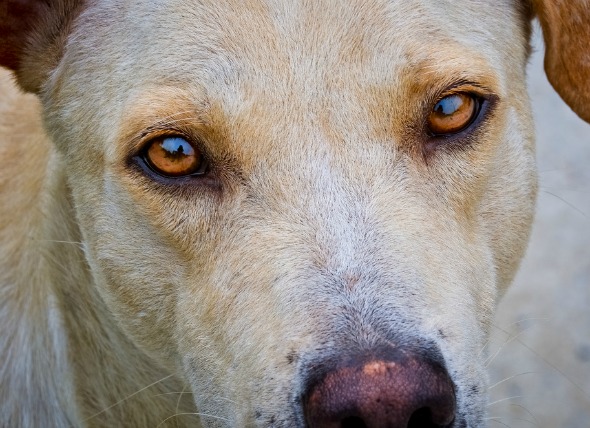
The salivary glands produce and secrete saliva to help in lubrication and improve the solubility of food, an essential component of the digestive process. There are four major salivary glands, including the mandibular, sublingual, parotid, and zygomatic gland. Adenocarcinoma can affect any of these salivary glands, but the most commonly affected gland in dogs is the mandibular gland.
Adenocarcinoma is characterized as originating in the glandular tissue, and like other carcinomas, can be especially malignant, spreading quickly throughout the body. This is generally a locally invasive tumor, but it can also metastasize and invade other distant parts and organs of the body. Like other adenocarcinomas, salivary gland adenocarcinoma is usually found in older animals, around 10-12 years of age.
Symptoms of adenocarcinoma of the salivary glands depends upon the type of salivary gland that is affected. Following are a few of the common symptoms related to salivary gland adenocarcinoma:
The exact cause is still unknown.
Your veterinarian will perform a thorough physical exam on your pet, taking into account the background history of symptoms. Blood tests, biochemical profiles and urinalysis will be performed, though results will often return as normal with this disease. Radiographs of affected areas and bones can reveal important information about the nature and extent of the problem. X-rays of other regions may also be performed to see if the tumor has metastasized into these regions of the body, and more refined procedures, like tissue biopsy, will help in establishing a confirmatory diagnosis.
Unfortunately, there is no definitive treatment available for adenocarcinoma of the salivary glands in dogs. Surgery to excise and remove the tumor along with some adjacent normal tissue is often recommended. After surgery your dog may be recommended for radiotherapy to achieve local control and long-term survival. No chemotherapeutic agent has yet been recommended for salivary gland adenocarcinoma. Multiple surgeries may be required along with the subsequent radiotherapy sessions.
Patients that have undergone surgery may need to be taken for veterinary evaluations every three months. Surgery combined with radiotherapy can improve survival time for up to several months in dogs. You can improve the quality of life for your dog during this period by keeping stress at a minimum and making keeping your dog as comfortable as possible to minimize pain and other associated complications. Your dog will need special attention in proper nutrition and pain control. Your veterinarian will guide you in planning for meals and in choosing the best remedies for pain management.
 Skin Bumps (Papulonodular Dermatoses) in Dogs
Papulonodular Dermatoses in Dogs
Papulonodular de
Skin Bumps (Papulonodular Dermatoses) in Dogs
Papulonodular Dermatoses in Dogs
Papulonodular de
 Hernia (Hiatal) in Dogs
Hiatal Hernia
A hernia is most likely to occur in
Hernia (Hiatal) in Dogs
Hiatal Hernia
A hernia is most likely to occur in
 Iris Cysts
Iridociliary Cysts in Dogs
Sometimes referred to
Iris Cysts
Iridociliary Cysts in Dogs
Sometimes referred to
 Lung Cancer (Adenocarcinoma) in Dogs
Adenocarcinoma of the Lung in Dogs
Adenoca
Lung Cancer (Adenocarcinoma) in Dogs
Adenocarcinoma of the Lung in Dogs
Adenoca
 Unintentional Eye Movement in Dogs
Nystagmus in Dogs
Nystagmus is a condition
Unintentional Eye Movement in Dogs
Nystagmus in Dogs
Nystagmus is a condition
Copyright © 2005-2016 Pet Information All Rights Reserved
Contact us: www162date@outlook.com